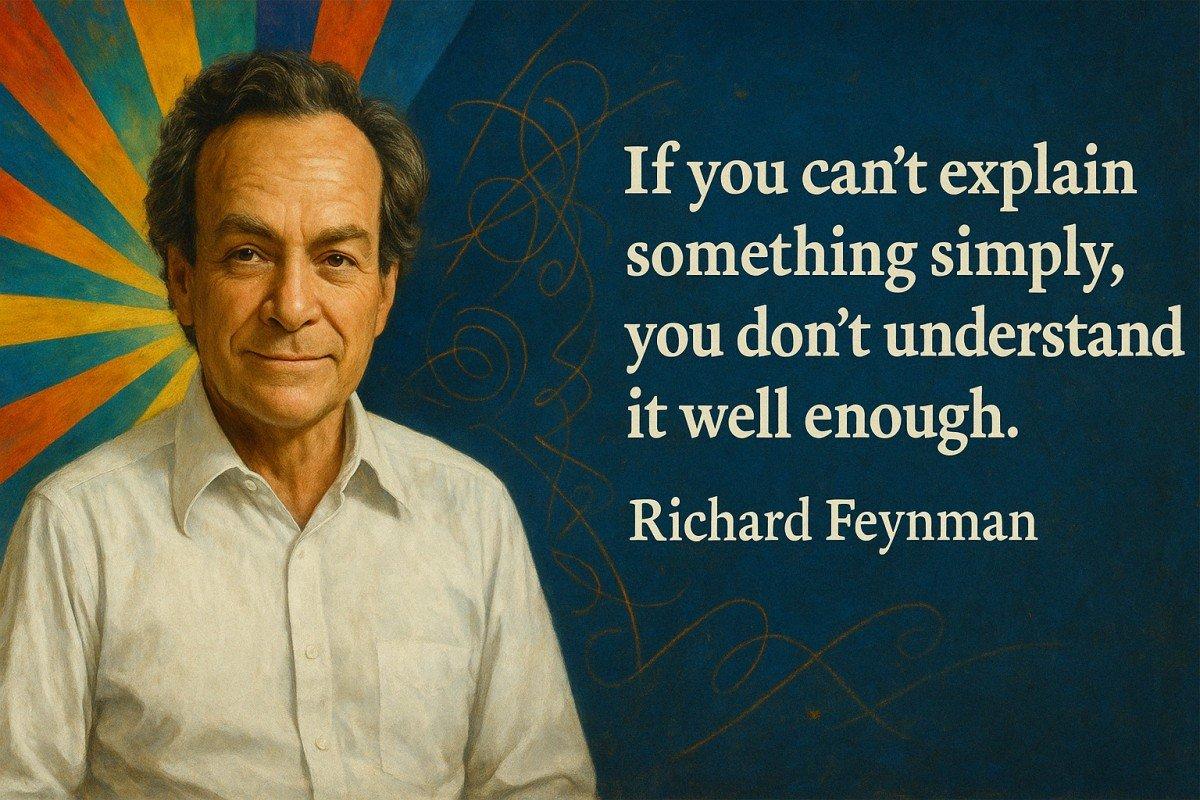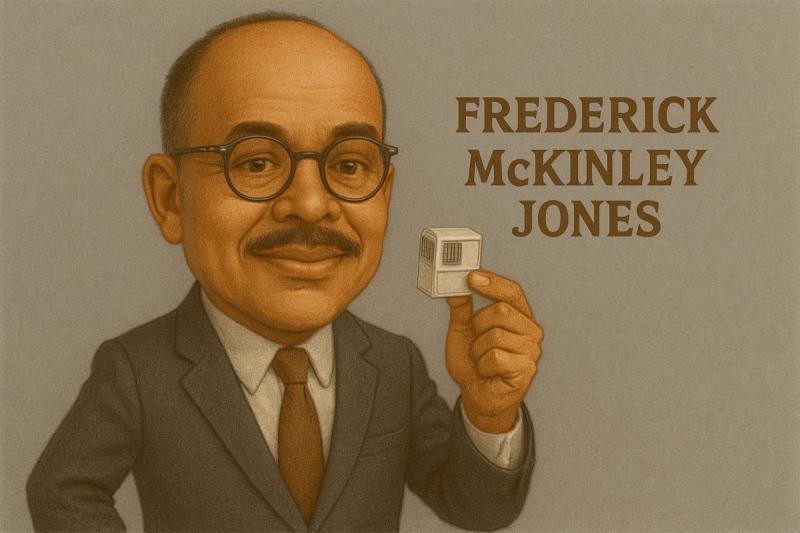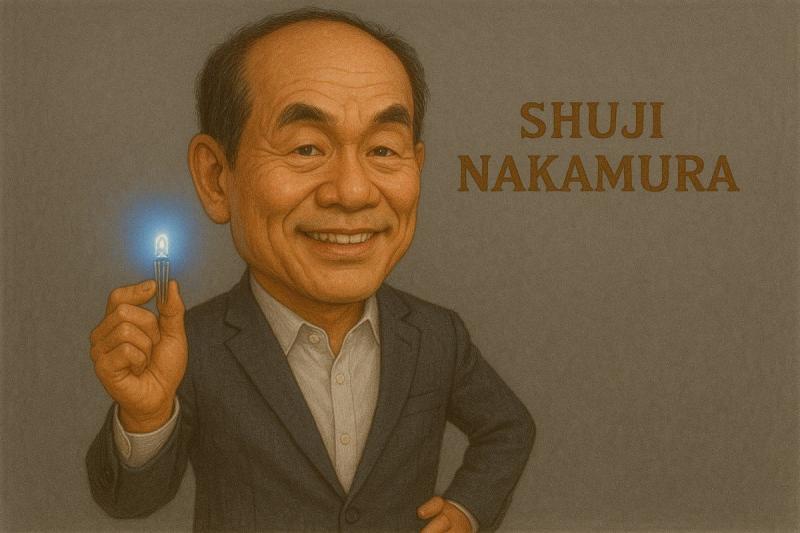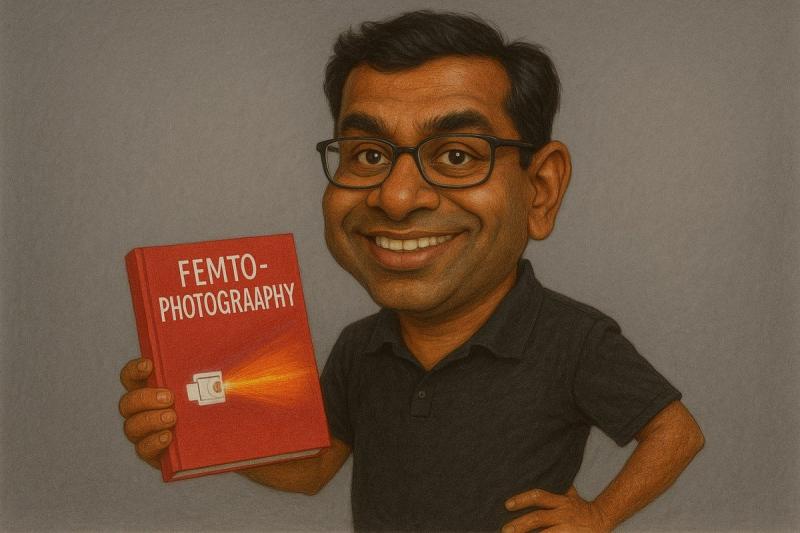Richard Feynman: The Scientist Who Refused to Be Boring
Ever wonder what happens when you mix genius-level physics with a prankster's spirit?
You get Richard Feynman – a man who could explain quantum electrodynamics one minute and crack supposedly uncrackable safes the next. This wasn't just some nerdy scientist hiding behind textbooks. Feynman was what you'd get if you combined Einstein's brain with a stand-up comedian's personality, and threw in an insatiable curiosity that made him everything from a safecracker to a bongo drummer.
The Nobel Prize Was Just the Beginning
Let's start with the obvious: Feynman was scary smart.
In 1965, he won the Nobel Prize in Physics for his work on quantum electrodynamics.
Sounds fancy, right? It is. He basically helped figure out how light and matter interact, creating diagrams (now called "Feynman diagrams") that physicists still use today.
But here's the thing about Feynman – winning one of the world's most prestigious awards was almost a side note in his colorful life. While most Nobel laureates might frame their certificate and call it a day, Feynman was too busy:
-
Learning Mayan hieroglyphics
-
Figuring out how to crack into safes
-
Exploring every corner of curiosity he could find
The Los Alamos Safecracker
During World War II, Feynman worked on the Manhattan Project at Los Alamos, helping develop the atomic bomb. Serious business, for sure. But did that stop him from being, well, Feynman? Not a chance.
He developed a reputation as the resident safecracker, breaking into locked filing cabinets and safes containing the nation's most classified nuclear secrets.
Why?
-
Partly to expose security flaws
-
Partly because he found it intellectually stimulating
-
And honestly, partly because he thought it was hilarious
Imagine the scene:
Some of the world's top scientists working on a top-secret project that would change history forever, and there's Feynman, leaving notes like "Guess who?" in safes just to mess with people.
Classic.
Renaissance Man Doesn't Even Cover It
If physics and safecracking were Feynman's only talents, he'd still be remarkable. But the man couldn't stop collecting random skills and interests:
-
Taught himself Tuvan throat singing, a technique from remote Russia
-
Became fluent in Portuguese just to lecture in Brazil
-
Deciphered Mayan hieroglyphics for fun
-
Played bongos and performed in orchestras
-
Created art under the pseudonym Ofey
And then there were the Las Vegas showgirls.
Feynman enjoyed the company of dancers and performers, hanging out in Vegas not just for the gambling (though he did apply his mathematical mind to that too), but for the social scene.
After his first wife's death, he frequented bars and casinos, forming genuine friendships with showgirls who probably never expected to discuss quantum physics during their breaks.
The Challenger Investigation: When Fun Met Responsibility
When the space shuttle Challenger exploded in 1986, killing all seven crew members, Feynman was appointed to the Rogers Commission to investigate the disaster.
And this is where we see the deeper side of Feynman: a man of integrity.
While other commission members were bogged down in bureaucracy, Feynman performed a simple, dramatic demonstration on live television. He took a small piece of the rocket’s O-ring material, dipped it in ice water, and showed how it lost elasticity – exactly the conditions on the day of the launch.
With that one move, he cut through all the technical jargon and political fog.
It was classic Feynman:
Making the complex understandable through simple demonstration.
The Secret to Feynman's Genius: Boundless Curiosity
What made Feynman so special wasn't just his IQ (though that was off the charts).
It was his approach to life.
He had this childlike wonder about everything.
Nothing was too mundane to be interesting if you looked at it the right way.
"I'm an explorer, okay? I like to find out!" – Richard Feynman
He meant it. He would literally follow ants around just to figure out their patterns.
Who does that?
Feynman did.
He believed that not knowing things was an opportunity, not a failure:
"I can live with doubt and uncertainty... I think it's much more interesting to live not knowing than to have answers that might be wrong."
The Feynman Technique: Making Learning Stupidly Simple
Perhaps Feynman's most lasting contribution beyond physics is his learning method, now known as the Feynman Technique. It's ridiculously simple:
-
Take something you want to learn
-
Try to explain it to a 12-year-old
-
Identify the gaps in your explanation
-
Go back, learn more, and simplify again
That’s it.
"If you can't explain something simply, you don't understand it well enough."
This technique has helped countless students master complex subjects and perfectly captures Feynman's belief that complexity is often just poorly understood simplicity.
The Ultimate Legacy: Finding Joy in Discovery
Looking at Feynman's life, the takeaway isn’t just “wow, smart guy.”
It’s that curiosity, coupled with a refusal to take life too seriously, can make for an extraordinary existence.
In a world that often separates “serious academic work” from “having fun,” Feynman showed that the two aren’t just compatible – they’re complementary.
His jokes and pranks weren’t separate from his scientific achievements; they came from the same place:
A mind that refused to accept boundaries and conventions.
So next time you’re faced with something that seems too complex or boring to bother with, channel your inner Feynman:
-
Ask the silly question
-
Try the weird approach
-
Learn the random skill
-
Crack the safe
Because life’s too short not to be curious about everything – especially the stuff that makes you laugh.
"The joy of finding things out is what makes being human pretty damn amazing." – Richard Feynman (probably while playing bongos or drawing diagrams)



